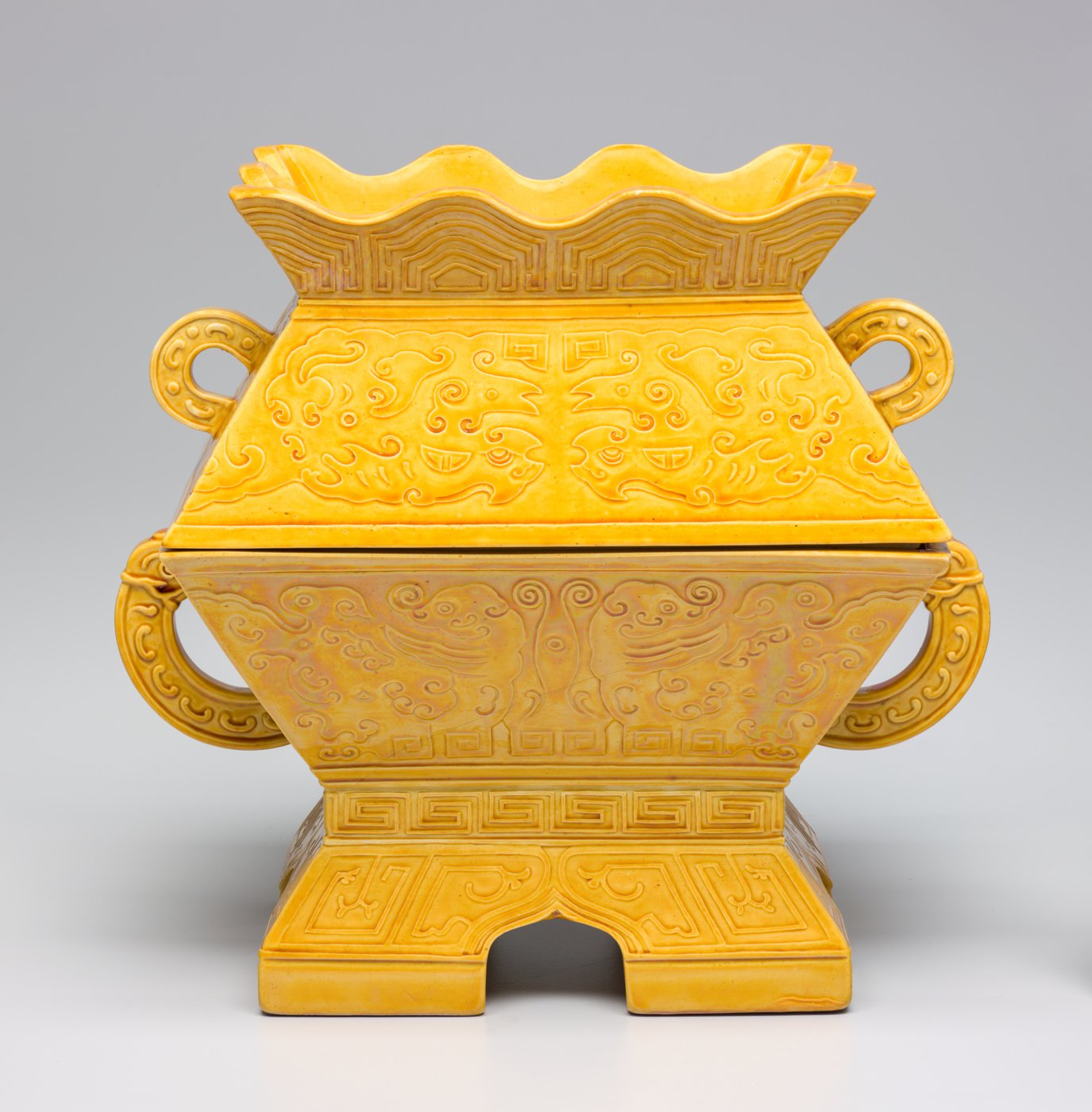Menu
The Way We Eat at Home
Enchanted
Enchanted
In all societies, sharing food is a primary way of initiating and maintaining human relationships. The preparation and consumption of food can also be a ceremonial act charged with symbolic importance. In ancient China, food was offered to ancestors and deities, as well as the deceased.
In every culture, certain foods have metaphoric meanings beyond their gastronomic function. For example, the ordinary gourd has many auspicious meanings in Chinese culture. It symbolises luck and prosperity, as well as being associated with Daoism. Eating and drinking are ways of expressing one’s sentiments and state of mind, making them popular subjects in works of art.

An installation view of ‘The Way We Eat’ exhibition, Art Gallery of New South Wales

Circular ding cauldron with animal motif
China
Shang dynasty (c1600–1100 BCE)
bronze
This ding cauldron was used to offer food in ritual ceremony of ancestor worshiping in ancient China, and symbolises ancient traditions and project legitimacy of power.

Banquet for the times
Li Jin
China, b1958
ink and colour on xuan paper
The calligraphy surrounding the diners is from the Ten Great Vows of Samantabhadra Bodhisattva. Buddhist teaching encourages people to find a middle path between extremes of self-denial and the indulgence enjoyed by Li Jin’s gluttonous diners.

Going to bed with the fish 2017
Liu Shuyong
China, b1962
ink and colour on paper
The inscribed poem on the top of the painting reads:
As night falls
I take the fish to bed
Letting the shitty affairs of the world
F*** right off
Nothing is a worry
Following my heart
Is pure ecstasy
(translated by Mabel Lee)

‘Fu’ ritual vessel
China
Qing dynasty, Tongzhi period (1862–74)
porcelain with yellow glaze
Later dynasties in China ordered porcelain objects that imitated bronze ritual vessels of the archaic periods to be used in ritual ceremony. Different colours were assigned to certain ceremonies, such as azure for worshipping heaven and yellow for earth and agriculture.

Gourd-shaped bottle with butterfly design
China
Ming dynasty, Jiajing period (1522–66)
stoneware with fahua decoration

Offering tray
China
circa 618 CE-907 CE
earthenware with sancai (three colours) glaze
Ancient Chinese burial rites included the building of tombs that imitated the houses of the living, which were furnished with mingqi (spirit vessels) to symbolically meet the needs of the deceased. Nourishment was even provided for the dead to enjoy in the afterlife on offering try like this one.

